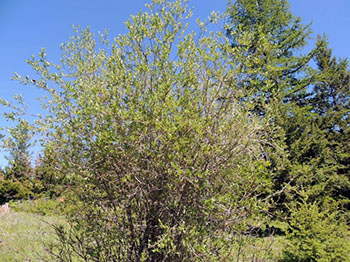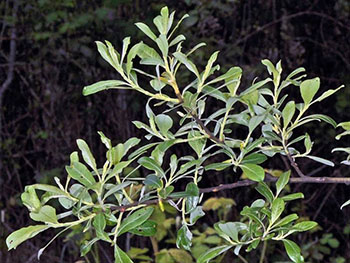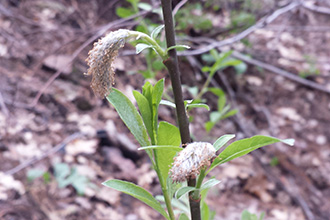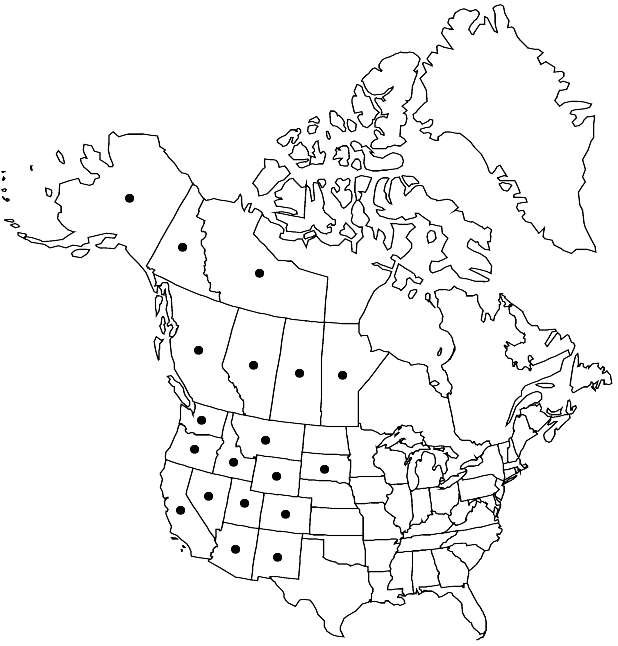Taxonomy: Kingdom - Plantae (plants). Subkingdom - Tracheobionta (vascular plants). Superdivision - Spermatophyta (seed plants). Division - Magnoliophyta (flowering plants). Class - Magnoliopsida (dicotyledons). Subclass - Dilleniidae. Order - Salicales. Family - Salicaceae (willow). Genus - Salix L. Species - Salix scouleriana Hook.
Ecology: Scouler willow is a shade intolerant, persistent seral species. It is often a minor understory component in a variety of forest types, occurring as scattered individuals in small openings. However, it increases after disturbance, including clearcutting, prescribed fire, soil disturbance, and wildfire. Scouler willow is an early to mid-seral species. Where not already present, it rapidly invades disturbed sites facilitated by its wind-dispersed seed, or sprouts following canopy removal. It capitalizes on moderate to severely burned sites. In clearcuts and young stands it forms a tall shrub layer, comprising a substantial percentage of the plant cover. In some areas, Scouler willow may dominate early seral plant communities following fire or clearcutting and on river terraces and gravel bars.



